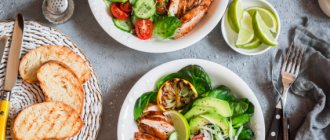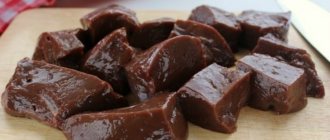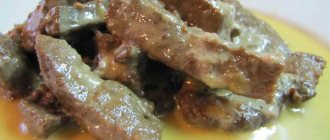What is liver fibrosis?
Liver fibrosis is a dynamic process during which the liver, in response to cell death due to inflammation, gradually increases the amount of connective tissue.
A healthy liver contains a small amount of connective tissue, which plays an important role in the formation of the complex structure of the organ. It surrounds the branches of the hepatic veins and arteries, the bile ducts and is located in the free space between the hepatocytes (the main cells of the liver) and the walls of the smallest hepatic vessels - the sinusoids.
Under the influence of various damaging factors, inflammation develops in the liver and hepatocytes die. Their death causes the production of substances that activate some of the connective tissue cells of the liver and, in particular, stellate cells, and they begin to produce collagen and other components of connective tissue.
During normal liver function, the process of producing additional connective tissue is aimed at maintaining its structure after voids form in the place of dead hepatocytes. In parallel, the process of restoration (regeneration) of cells starts in the liver, they increase in size for division, and the reverse mechanism of resorption of excess collagen under the influence of special enzymes is launched, and if the liver restoration process is successful, then it is freed from excess fibrous tissue.
But with chronic inflammation, the liver restoration process is disrupted. Excess connective tissue accumulates around larger hepatic vessels, bile ducts and in the free space between hepatocytes and the walls of small hepatic vessels - sinusoids. Fibrous tissue distorts the structure of the liver, disrupting its blood circulation and the passage of bile. Over time, the amount of connective tissue increases by 6-10 times compared to normal values, and more and more areas of the liver appear, replaced by connective tissue and unable to perform their functions.
Fibrosis can develop in various liver diseases:
- viral hepatitis B and C;
- non-alcoholic fatty liver disease (fatty hepatosis);
- alcoholic liver disease;
- autoimmune hepatitis
- hereditary disorders of iron and copper metabolism;
- drug or toxic liver damage;
- primary biliary cholangitis and primary sclerosing cholangitis and other rare diseases.
Despite the different nature of inflammation, the processes of formation of connective tissue occurring in the liver in all its diseases occur according to the same scenario. Read more about the causes of fibrotic changes and their prevention in our article.
Summer diet rules
- Summer diet involves daily consumption of at least 0.5 kg of vegetables or fruits , while trying to keep the daily calorie content to no more than 1200 kcal.
- During the diet, you should exclude salt, pickles, marinades, smoked foods, as well as sugar, flour and confectionery products, and alcohol from your diet.
- Half an hour before each meal you need to drink a glass of water .
- Not only on those days when you are on a summer diet, but also at other times, you should drink a sufficient amount of clean, non-carbonated and unsweetened water. During the diet, this volume should be 2.5 liters per day .
- Between meals you are allowed to drink a cup of green tea or herbal decoction.
- You cannot eat after 19:00.
- You should move more, engage in physical exercise and outdoor activities.
Degrees (stages) of fibrosis
Liver fibrosis develops gradually over many years and sometimes decades. Its rate is influenced by both the activity of the underlying liver disease and the individual characteristics of the person, as well as the presence of additional damaging factors. To classify fibrosis, special scales can be used and, in particular, the METAVIR scale, which distinguishes five degrees (stages) of liver fibrosis, reflecting the degree of changes occurring and the possibility of reversibility of the processes:
F0 – healthy liver.
F1 - first degree , when excess fibrous tissue is located only around the branches of the hepatic artery and vein, located in special areas called portal tracts, without the formation of partitions (septa). At this stage there are usually no symptoms, and liver enzymes may also be normal. On a survey ultrasound of the liver, changes in its tissues are most often not detected; less often, an increase in the size of the organ is noted - hepatomegaly and the presence of structural heterogeneity (this study cannot determine the stage of fibrosis).
F2 – second degree , in which additional septa are formed from fibrous tissue, isolating the main liver cells (hepatocytes) from the blood entering the liver. This disrupts the process of blood purification by hepatocytes and prevents the entry of substances that these cells produce into the blood. In places where septa are formed, blood bypasses the liver cells and is discharged from the afferent vessels into the hepatic veins. In most cases, there are no symptoms at this stage either. Liver enzymes and inflammatory markers increase; liver ultrasound in all patients shows an increase in the size of the organ and the presence of structural heterogeneity.
F3 – the third degree occurs 6-8 or more years from the onset of the disease. The number of septa and fibrous tissue in the portal tracts increases significantly. Usually at this stage the first symptoms appear - weakness, drowsiness, fatigue, bruises on the skin and others. Liver enzymes increase, hemoglobin and platelet levels decrease, inflammatory markers increase, and on liver ultrasound, the presence of denser areas is added to liver enlargement and diffuse changes. Up to the third stage, fibrotic changes in the liver can be reversible with complete cure of the disease that caused them.
F4 – liver cirrhosis , at this stage there is an irreversible replacement of liver tissue with fibrous, connective tissue. Read more about liver cirrhosis.
The most famous version of the summer diet for 7 days
This summer diet for weight loss can be called a vegetarian diet, since it involves eating only plant foods. Most products do not require heat treatment, but boiling or steaming is allowed. It is better to increase the number of meals to 5-6, eating in not too large portions. Moreover, in the heat, the feeling of hunger subsides significantly.
And you should definitely drink a lot of liquid: decoctions, natural juices, compotes and, of course, clean water. No carbonated drinks, alcohol, or coffee.
The first day:
It is dedicated to vegetables. The scheme couldn’t be simpler. You can choose one specific vegetable, or you can at least eat a piece of each. Their number is also not reduced. The only thing is that potatoes and eggplants are not allowed.
Second day:
Fruit. Again, eat as much as you like, and whatever fruit you like. With the exception of bananas and grapes, as well as persimmons. But if you have a strong craving for one of these fruits, you can include them in your breakfast.
Day three:
Now the focus is on the berries. Again, there are no restrictions, but special preference should be given to watermelons, gooseberries, currants, and strawberries.
Day four:
Here we take a short break from plant foods, and the fermented milk group of products comes into play. Kefir, cottage cheese, fermented baked milk, natural yogurt. Choose the fat percentage as low as possible. It can be flavored with honey or cinnamon.
Day five:
The first vegetable day is repeated again, but an innovation appears: boiled potatoes are allowed in the first half of the day.
Day six:
Similar to berry day.
Day seven:
After it, all the previous ones will seem like a continuous celebration of the belly, since here you will have to live for a day on freshly squeezed fruit juices. Citrus, apple, pineapple, and grape juices are best.
Reviews of the 7-day summer diet claim that it is quite easily tolerated, since it does not reduce the caloric content of the diet to unacceptable limits, and is not a starvation regime. Many lose from 3 to 7 kg per week: depending on what numbers the path to slimness began with. And most women do not even perceive such a scheme as a diet, since at high ambient temperatures the body itself requires giving up heavy foods.
But it is worth noting that such a summer diet for weight loss is not suitable for people with diseases of the gastrointestinal tract, liver and pancreas. And also in the presence of serious cardiovascular diseases, hypertension and hypotension. Before using it, it is strongly recommended to talk to a specialist.
Methods for diagnosing liver fibrosis
For diagnosis, a puncture biopsy of the liver with histological examination of the resulting sample can be used. It is considered the “gold standard”, but has limitations and disadvantages:
- is an invasive method that can cause complications;
- it is risky to use for dynamic observation and monitoring of treatment results;
- the amount of material obtained from a puncture biopsy is limited and can accurately reflect only the condition of the part of the liver from which it was taken (the liver with fibrosis is heterogeneous);
- sampling errors are possible;
- lack of qualified morphologists conducting histological examinations.
There are also non-invasive methods - laboratory panels of tests, for example, FibroMax and shear wave ultrasound elastography of the liver, which, when combined according to the latest clinical guidelines of the European Society for the Study of the Liver, give a result closest to that obtained with a liver biopsy.
These are more accessible and non-traumatic methods that have sufficient sensitivity and specificity and can be used repeatedly to assess the degree of liver fibrosis at various stages of its progression.
Treatment of liver fibrosis
Currently, no medicine has yet been found that could directly affect liver cells so that they stop producing connective tissue, although scientific research on this topic is ongoing. Therefore, in order to stop the progression of fibrosis, all efforts must be directed toward treating the disease that caused the inflammation and reducing additional risks of fibrosis progression.
For the treatment of chronic viral hepatitis C, new direct-acting antiviral agents are used, which, with the correct selection of drugs and a sufficient duration of treatment, provide a 99% complete cure for the virus, cessation of the inflammatory process in the liver and the progression of fibrosis. Also, after treatment, the degree of fibrosis decreases.
To treat chronic viral hepatitis B, drugs are used that suppress the virus, reduce the activity of inflammation and put the process into remission. The cessation of inflammation slows down and stops the process of fibrosis.
GC Expert has special programs for the treatment of chronic hepatitis C and chronic hepatitis B, including all the necessary studies and medical support.
For alcoholic liver disease, the most important treatment is complete abstinence from drinking alcohol.
More than 90 scientific studies are being conducted around the world to find a cure for the treatment of non-alcoholic fatty liver disease (fatty hepatosis). But for now, to reduce the amount of fat in the liver in this disease and stop the fibrotic process, diet and increased physical activity are used.
Also, for all chronic liver diseases, in addition to the main treatment, medications with hepatoprotective properties can be used.
Fast weight loss in summer
Rapid weight loss is not associated with the loss of fat tissue, but with the loss of water. Therefore, a vegetarian or any other diet for quick weight loss should be treated with caution.
The main problem with such diets is their aggressiveness. It is important that the daily caloric intake of a summer diet for quick weight loss is at least 1600 kcal, and that all food groups are present in the diet. It is also important to remember that some people, in principle, are not recommended fasting days: neither kefir nor vegetable.
Mono-diets or diets based on the principle of “one product per day” cannot be called healthy. The diet should be varied, and weight loss will always occur when the energy expended exceeds the number of calories consumed.
Are there healthy diets for quick weight loss? As they say in Japan: fast is slow, but in the right direction. Therefore, it is important that summer diets for weight loss do not differ too much from your usual eating style. Then the diet can be called truly useful.
For example, you can lose weight on vegetables and fruits in a week, but these kilograms will return very soon, and with “friends.” A diet that is beneficial for weight loss should not be stressful for the body. Therefore, it is better to reformulate the question “how to quickly lose weight with fruits” as “how to learn to maintain weight with the help of fruits and vegetables.”
Free consultation with a nutritionist
Sign up
How often should you see a doctor if you have liver fibrosis?
Patients with liver fibrosis require periodic monitoring by a gastroenterologist, and the frequency of consultations is selected individually depending on the stage of fibrosis and the activity of the inflammatory process.
If liver inflammation is in an active stage, then to stop the progression of fibrosis, it is necessary, under the supervision of a doctor, to immediately begin treatment for the disease that caused it. The frequency of visits to the attending physician depends on the timing of monitoring to check the effectiveness of treatment and make changes to it if necessary.
If liver inflammation has entered an inactive stage as a result of complete cure or remission, but liver fibrosis remains, then it is necessary to undergo preventive examinations by a doctor and laboratory diagnostics of liver parameters once every six months, and once a year fibrosis is diagnosed using non-invasive monitoring methods.
Patients with the last stage of fibrosis - cirrhosis - require clinical observation, diagnostic testing to check the condition of the liver and supportive treatment once every three or six months or when any new symptoms appear. In such patients, the presence of fibrotic changes increases the risk of developing liver cancer (hepatocellular carcinoma), therefore, for preventive purposes, alpha-fetoprotein levels and other tumor markers are also checked twice a year.
Diet for liver fibrosis
The composition of food is important for the liver; excess or lack of nutrients negatively affects its condition. The liver is involved in protein metabolism, so it is important to include protein products of plant and animal origin in the diet in equal shares to ensure the required intake of 80-90 grams of protein per day. It is useful to consume foods that prevent the accumulation of fat in the liver - cottage cheese, cheese, egg whites, cod, oatmeal and others. Limiting animal proteins in the diet and replacing them with plant proteins is recommended at the stage of cirrhosis and when the condition worsens.
In most cases, it is also not necessary to limit fats below normal (80-90 grams), except for the stage of liver cirrhosis, when fats are limited to 50-60 grams. Products containing hard-to-digest refractory fats are prohibited: lamb, fatty pork, geese and duck meat.
Excessive consumption of refined sugar and products containing it is harmful to the liver. The daily intake of carbohydrates is limited to 350-400 grams, where the proportion of simple sugars should not exceed 70 grams. Among foods containing carbohydrates, it is recommended to give preference to foods rich in plant fiber: vegetables, fruits, whole grain bread and pasta.
The amount of fluid consumed is limited only in people with cirrhosis of the liver, but salt intake, regardless of the degree of fibrosis, is recommended to be reduced to 8-10 grams, and in the presence of edema to 3-4 grams.
It is also important to eat regularly 4-5 times a day at approximately the same time and avoid late, heavy dinners.
List of recommended products:
Wheat, whole grain, dried rye bread, biscuits, baked goods made from soft dough.
Soups with the addition of vegetables, cereals, pasta in vegetable broth or milk, borscht, beetroot soup, cabbage soup made from fresh cabbage, flour and vegetables are added to the soup without frying.
Dishes of lean meat and poultry (beef, veal, turkey, chicken) boiled, baked, or stewed, steamed.
Dishes from low-fat fish (cod, pike perch, perch, navaga, carp, pike) boiled or baked.
Butter (30-40 g) and vegetable oil (20-30 g): olive, sunflower or corn (added to ready-made dishes in their natural form without cooking).
Various types of boiled and baked vegetables, onions are added only after scalding with boiling water. Also fresh vegetables, especially if you are prone to constipation.
Porridge, especially oatmeal and buckwheat, casseroles from cereals and pasta with the addition of cottage cheese.
No more than 1 egg per day (if well tolerated) or 2 whites to prepare a protein omelet.
Dairy, sour cream sauces with vegetable broth, fruit and berry sauces. Flour for sauces is not sautéed with butter.
Any fruits and berries, except very sour varieties (lemon with sugar is fine). Compotes, purees, and jelly are recommended.
Milk and dairy products - whole, natural milk (if well tolerated), low-fat fresh cottage cheese and cheese, curdled milk, kefir, acidophilus milk; sour cream is added to dishes as a seasoning.
Products to exclude:
- fatty meat and poultry;
- products with added trans fats (solid vegetable oils);
- fried, smoked, pickled and overly salted foods;
- excessively fatty fish;
- sweet pastries, cakes with cream;
- fatty dairy products;
- hot spices, raw garlic and onions;
- carbonated drinks;
- strong meat broths;
- canned food
Alcohol use in liver fibrosis
Alcohol can cause additional liver damage, so if you have chronic liver disease or fibrotic changes, complete abstinence from alcohol is recommended.
Rules for losing weight in summer
Summer diets are good in the sense that a person loses his appetite due to hot weather. The body is not at all opposed to a limited intake of calories, so losing weight takes place without interruption by eating unhealthy foods.
The basis of any summer diet is the same principle - you need to eat seasonal gifts of nature in unlimited quantities. Due to the low calorie content of berries, vegetables and fruits, a properly formulated diet will not affect the figure in any way, but at the same time a person will not experience the hunger that occurs with a sharp change in the principle of nutrition.
Despite the rich composition of natural gifts, they still cannot provide a person with a sufficient amount of nutritional components. Because of this, you cannot stick to a summer diet for too long; you must include protein and carbohydrate foods in your diet, for example, porridge and lean meat.
All summer diets require the following conditions:
- You need to eat in small fractional portions 5-6 times a day.
- Seasonal gifts of nature can be eaten in any quantity to satisfy your hunger.
- To restore the fluid balance that is disrupted due to the lack of salt in the diet, you need to drink at least 2 liters of pure water without gas per day.
- Black tea, coffee, lemonade, alcohol and other drinks, with the exception of water and green tea, should be excluded from the diet.
Another advantage of losing weight during the hot season is that many people want to look good in short skirts, T-shirts and open swimsuits, and to do this they need to get rid of unsightly folds on their figure. This desire creates the most important condition for an effective diet - strong motivation. This is already half the success, so all that remains is to show willpower and endure the entire diet on low-calorie foods.
Additional risk factors for fibrosis progression
With liver inflammation caused by one of the damaging factors, the additional presence of others, also causing chronic hepatitis, worsens the prognosis and reduces the effectiveness of treatment.
For viral hepatitis - alcohol, infection with other viruses that damage the liver, lack of treatment, obesity. In the case of alcoholic liver disease, all other concomitant chronic liver diseases have a negative impact. In addition, hereditary predisposition and age may have an influence.
Dyskinesia of the gallbladder and biliary tract (functional biliary disorder)
Impaired bile outflow is an additional damaging factor that contributes to the development and progression of fibrotic changes in the liver, therefore timely detection and treatment of diseases of the gallbladder and bile ducts is necessary to support the liver. This is especially important for patients with non-alcoholic fatty liver disease (fatty liver disease), since problems in the biliary tract can contribute to the progression of fat accumulation in the liver.
If the functioning of the gallbladder and the outflow of bile are impaired, abnormalities develop that aggravate liver pathology:
- small intestinal bacterial overgrowth syndrome (SIBO) due to a decrease in the bactericidal effect of bile and digestive disorders in the duodenum;
- disruption of the cyclic circulation of bile acids in the digestive tract.
Therefore, in addition to treatment aimed against inflammation and fibrosis in the liver, treatment that improves the condition of bile and bile flow is additionally prescribed.
Gallstone disease and cholecystectomy
Cholecystectomy (removal of the gallbladder) in patients with chronic liver disease, especially nonalcoholic fatty liver disease, may cause progression of fibrotic changes. You can learn more about this in our article Gallbladder removal and fatty liver disease.
Diabetes mellitus type 2
Patients with type 2 diabetes have a high risk of developing non-alcoholic fatty liver disease (fatty liver disease), which is one of the common causes of cirrhosis and liver cancer.
Insulin resistance (cell insensitivity to insulin) and elevated insulin levels worsen the properties of bile, make it thicker, and impair the contractility of the gallbladder, which worsens the condition of the liver.
Taking hepatotoxic drugs and dietary supplements
Patients with liver fibrosis are more sensitive to the effects of drugs and dietary supplements that have a damaging effect on the liver:
- non-steroidal anti-inflammatory drugs;
- antibiotics;
- antiarrhythmic and against hypertension;
- tranquilizers and neuroleptics;
- antitumor hormonal;
- to reduce the level of low-density lipoproteins associated with the risk of developing vascular atherosclerosis;
- antifungal;
- immunomodulators.
Therefore, the prescription of this group of drugs is carried out only for health reasons under the supervision of a gastroenterologist and with clarification of the condition of the liver, as well as with the appointment, if necessary, of hepatoprotective therapy to protect the liver. You can read more about drug-induced liver damage in the article.
Heart failure
Chronic liver and heart diseases are connected, and this connection can be traced in both directions. Fatty liver disease (non-alcoholic fatty disease) not only can cause liver damage, but also increases the risk of developing cardiovascular disease.
Can liver fibrosis be reversed?
Before moving to the last stage (cirrhosis), this can be a reversible process, but only if the liver diseases that caused it are treated in a timely and effective manner. Also, the reversibility of the processes of fibrotic changes is influenced by the duration of their presence. In both cases, it is important to detect the onset of fibrosis as early as possible. Since often at the initial stage its presence does not affect the well-being in any way, we recommend that people at risk carry out preventive diagnostics of liver fibrosis using non-invasive methods:
- with viral hepatitis;
- obesity and excess weight;
- diabetes mellitus type 2;
- insulin resistance;
- elevated lipid or cholesterol levels;
- with hypertension;
- disorders of iron and copper metabolism.
The most accurate non-invasive method is a combination of an instrumental method (shear wave elastography of the liver) and a laboratory method (FibroMax), which are included in our “Check-up Non-invasive Liver Biopsy” program.
Benefits of a summer diet
Of course, we get the freshest, most vitamin-rich and healthy fruits in the summer in the form of seasonal berries, vegetables and fruits, the variety of which is simply off the charts and can satisfy even the most sophisticated needs.
The low calorie content in fruits, a large amount of vitamins and beneficial microelements, as well as fiber, allows you to lose weight profitably and comfortably.
In the summer, as a rule, we experience much less hunger than in the cold season, and this is also an obvious plus in our arsenal against extra pounds.








